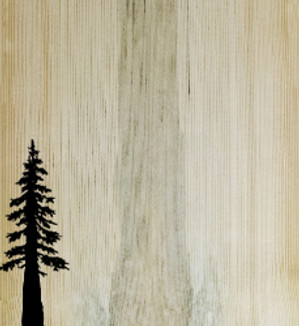Colorado Tonewoods
Engelmann Spruce

This variety of Spruce grows on high altitude slopes above 9,000 ft. In the Last two decades, huge stands of Engelmann have fallen victim to the spruce beetle epidemic that plagues much of the west. The beetles do their damage just under the bark, but leave the undamaged heartwood with beautiful blue-ish gray staining. Spruce has excellent stiffness to weight ratio and is widely used in string instruments for its brightness, clarity and projection.
Douglas Fir

Instrument grade Doug-Fir comes from old growth trees with tighter grain size and mature amber coloration. ‘Fire trees’, or old standing-dead trees singed & sealed by long ago forest fires, are ideal.
Douglas-Fir has a warm yet robust tone, with a full-bodied bass, & great Sustain. This wood excels in rowdy flat-picking environments.
Rocky Mtn Juniper

A native to the scrublands of the Rocky Mountains, Juniper is a close relative of the Red Cedar (Cypress Family) The wood is fine grained, with light yellow sapwood and rich maroon to purple heartwood.
The Tree’s short, stocky, & irregular shape paired with an extremely slow growth rate discourage commercial use of the lumber.
Rocky Mountain Juniper is slightly lighter in weight & more porous than Red Cedar, which contributes to a warm, and full sound and a light, responsive feel.
Black Walnut

While not technically a native of Colorado, Black Walnut trees were planted in many of Colorado’s urban areas over 100 years ago. Many of these old trees are beginning to die off – a windfall for instrument makers in a hardwood deprived state. Walnut is similar in hardness and tone to mahogany.
